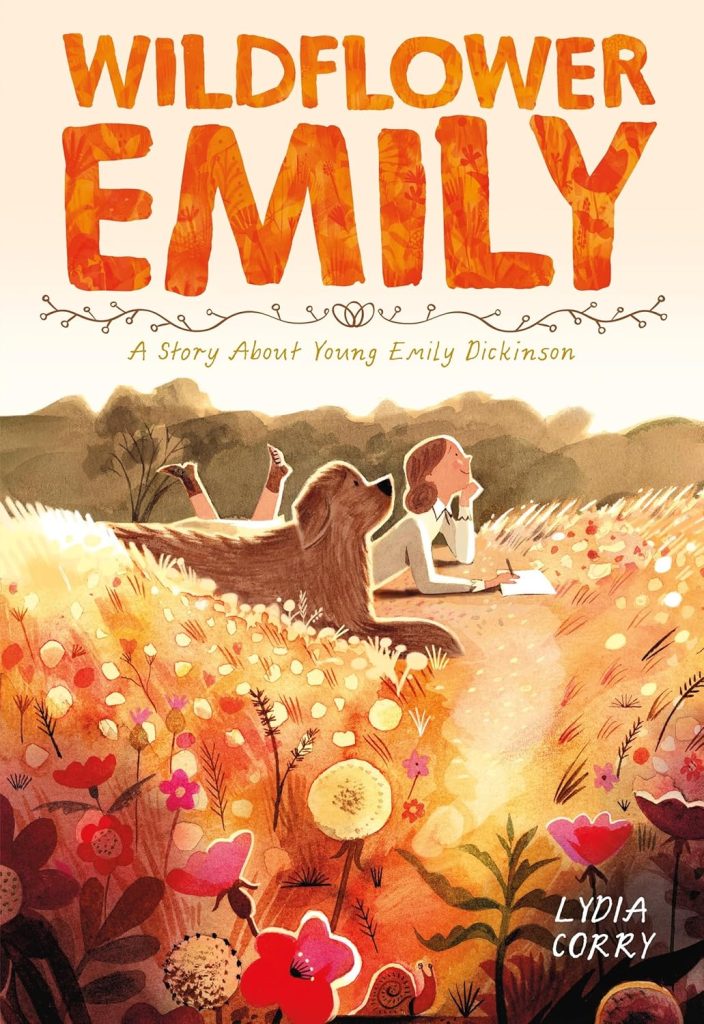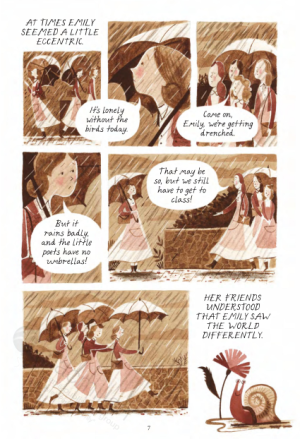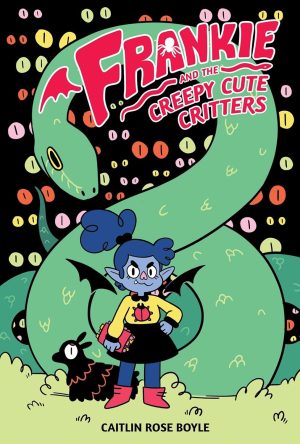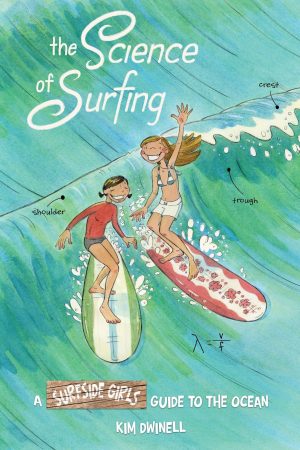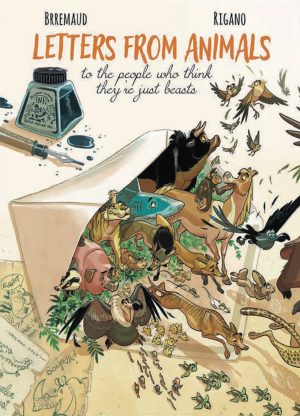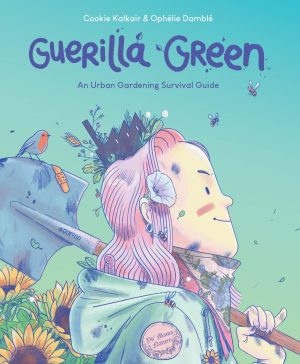Review by Ian Keogh
The works of Emily Dickinson were all-but ignored during her 19th century life, but due to the recognition of her talent by her sister Lavinia and her persistence, Emily was posthumously published and is now regarded as among the greatest of American poets. Lydia Corry looks at her younger days, before she withdrew from the world, and a New England childhood that proved a lifelong inspiration.
Corry starts with a detailed biographical primer quoting from surviving correspondence and notebooks, and building a picture of what life was like not just for the young Emily, but many other young girls of her era living in rural communities. The ‘Wildflower’ aspect of the title refers to her eccentric personality and her love of botany, and that passion is the thread running through the entire book.
Younger readers are the target, Corry keeping sentences simple and illustrations attractive in her individual style. The art is extremely thoughtful, with Corry taking a fine art approach rather than adhering to the structures of comic storytelling. If she feels a painted spread of a meadow is necessary it’s supplied, and she’ll switch from sepia toned cartooning to watercolour pages to express personal freedom. It’s very invigorating and fresh.
After an early introductory sequence most of Wildflower Emily has Emily wandering the meadows and forests delighting in discoveries with her large dog Carlo as a companion. Corry’s illustrations are accompanied by some of Dickinson’s poems when a suitable moment arises. These occur more often than may be imagined as with little other than Dickinson’s love of nature being a matter of record, Corry tailors multiple pages of conflated joyful times to those needs. Without the anchor of the poems, though, most of Wildflower Emily could concern any young girl’s love of the countryside, and without the period clothing it would be a timeless evocation.
The long day exploring is bookended by sequences of Emily among her family, and after the story’s done Corry supplies explanatory notes.
Corry is a persuasive encourager to children with the opportunity to explore nature, and Wildflower Emily also serves as an introduction to Dickinson’s poems, although the language of those is more complex. You don’t have to be a child, though, to appreciate the art.
